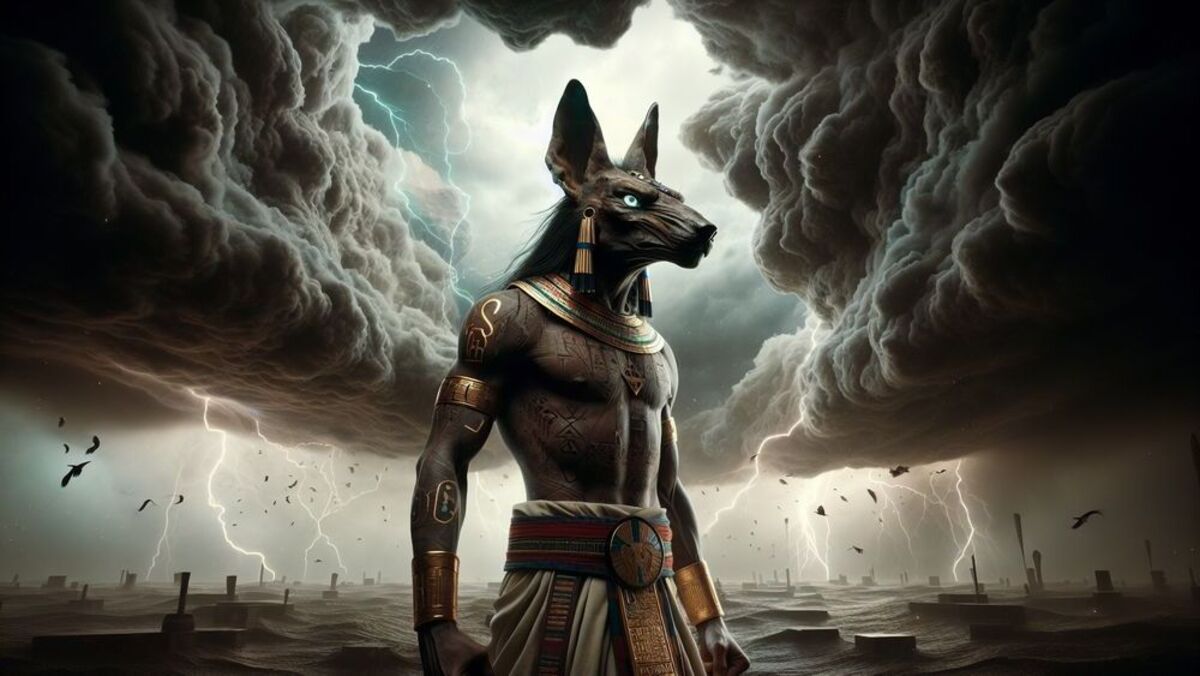
Who was Seth, the Egyptian god? Seth, also known as Set, was one of the most intriguing deities in ancient Egyptian mythology. He was the god of chaos, storms, and the desert. Often depicted with a mysterious animal head, Seth played a crucial role in the mythological tales of Egypt. His story is filled with battles, betrayals, and power struggles, especially with his brother Osiris. Despite his chaotic nature, Seth was also seen as a protector of Ra, the sun god, during his nightly journey through the underworld. Seth's complex character makes him a fascinating figure in ancient Egyptian lore.
Key Takeaways:
- Seth, the Egyptian god of chaos, was both a villain and a hero, embodying the duality of chaos and order in ancient Egyptian mythology.
- Seth's influence extended beyond mythology, impacting Egyptian culture and society, and continues to captivate the imagination of scholars, artists, and enthusiasts today.
Seth: The Egyptian God of Chaos
Seth, also known as Set, is one of the most intriguing deities in ancient Egyptian mythology. Known for his complex nature, Seth embodies chaos, storms, and disorder. Here are some fascinating facts about this enigmatic god.
-
Seth is often depicted with a mysterious animal head, known as the "Seth animal," which has features of various creatures like a donkey, aardvark, or jackal.
-
He is the brother of Osiris, Isis, and Nephthys, making him part of one of the most important divine families in Egyptian mythology.
-
Seth's most famous myth involves the murder of his brother Osiris, whom he dismembered and scattered across Egypt.
-
Despite his chaotic nature, Seth was also considered a protector of the sun god Ra, defending him against the serpent Apophis during his nightly journey through the underworld.
-
In some myths, Seth is portrayed as a hero who helps Ra navigate the dangers of the underworld, showcasing his dual nature.
Seth's Role in Egyptian Mythology
Seth's role in Egyptian mythology is multifaceted, making him a complex figure. He is both a villain and a hero, embodying the duality of chaos and order.
-
Seth was worshipped in several cities, including Ombos and Avaris, where he was considered a local deity.
-
He was associated with the desert, symbolizing the harsh and barren lands outside the fertile Nile Valley.
-
Seth's rivalry with Horus, the son of Osiris, is a central theme in Egyptian mythology, representing the eternal struggle between order and chaos.
-
In the "Contendings of Horus and Seth," a series of battles and contests between the two gods, Seth is often depicted as cunning and deceitful.
-
Despite his negative traits, Seth was sometimes invoked for protection against evil forces, highlighting his complex nature.
Symbols and Representations of Seth
Seth's unique symbols and representations set him apart from other Egyptian gods. His imagery often reflects his chaotic and unpredictable nature.
-
The "Seth animal" is one of the most distinctive symbols associated with him, though its exact identity remains a mystery.
-
Seth is often depicted wielding a was-scepter, a symbol of power and dominion.
-
He is sometimes shown with red hair and eyes, colors associated with chaos and destruction in Egyptian culture.
-
In some depictions, Seth is shown as a man with the head of a mythical creature, emphasizing his otherworldly nature.
-
The color red, linked to Seth, was considered unlucky and associated with the desert and chaos.
Seth's Influence on Egyptian Culture
Seth's influence extended beyond mythology, impacting various aspects of Egyptian culture and society.
-
Pharaohs of the Nineteenth Dynasty, such as Seti I and Ramses II, took their names from Seth, indicating his importance.
-
During the Second Intermediate Period, the Hyksos, who ruled parts of Egypt, adopted Seth as their chief deity.
-
Seth was sometimes invoked in magical spells and amulets for protection against evil spirits and misfortune.
-
His association with storms and the desert made him a god to be both feared and respected by ancient Egyptians.
-
Despite his chaotic nature, Seth played a crucial role in maintaining the balance of the cosmos by challenging the forces of order.
Modern Interpretations of Seth
Seth continues to captivate the imagination of scholars, artists, and enthusiasts. His complex character offers a rich source of inspiration and interpretation.
-
In modern pop culture, Seth has appeared in various forms, from comic books to movies, often portrayed as a villain.
-
Scholars continue to debate the origins and significance of the "Seth animal," adding to the mystery surrounding this deity.
-
Some modern interpretations view Seth as a symbol of necessary chaos, essential for transformation and change.
-
Artists and writers often explore Seth's dual nature, highlighting the fine line between chaos and order.
-
Seth's story has inspired numerous works of fiction, from novels to video games, showcasing his enduring appeal.
-
The study of Seth offers valuable insights into ancient Egyptian beliefs, revealing the complexities of their understanding of the world and the divine.
Seth's Legacy in Ancient Egypt
Seth, the Egyptian god of chaos, storms, and the desert, played a complex role in mythology. Known for his conflicts with Osiris and Horus, Seth's actions were both feared and respected. His association with the desert made him a symbol of both destruction and protection. Despite his chaotic nature, Seth was also a guardian of Ra during his nightly journey through the underworld. This duality highlights the ancient Egyptians' understanding of balance in the universe. Seth's legacy endures in modern interpretations of Egyptian mythology, reminding us of the intricate beliefs that shaped one of history's greatest civilizations. Whether seen as a villain or a necessary force, Seth's story continues to captivate those interested in the rich tapestry of ancient Egyptian culture.
Frequently Asked Questions
Was this page helpful?
Our commitment to delivering trustworthy and engaging content is at the heart of what we do. Each fact on our site is contributed by real users like you, bringing a wealth of diverse insights and information. To ensure the highest standards of accuracy and reliability, our dedicated editors meticulously review each submission. This process guarantees that the facts we share are not only fascinating but also credible. Trust in our commitment to quality and authenticity as you explore and learn with us.


